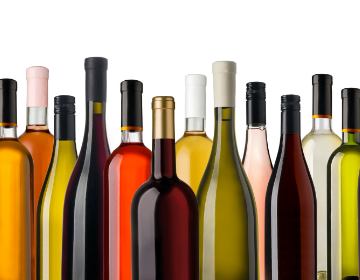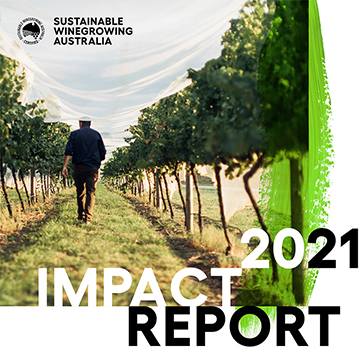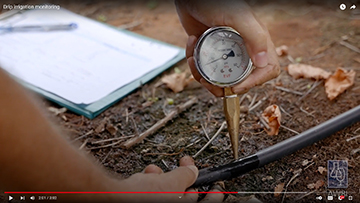Get your packaging right with tips from the AWRI helpdesk
New fluorescence method for detecting haze-forming proteins
Sustainable Winegrowing Australia Impact Report – the results are in
New partnership with international society
Practices survey coming later this year
AWITC – less than a month to go!
Season 2 of AWRI decanted podcast coming soon
Order the latest staff publications online
Get your packaging right with tips from the AWRI helpdesk |
|
 |
As vintage 2022 wraps up around Australia, thoughts will be turning to packaging for many wine producers. The AWRI helpdesk often sees the results when packaging goes wrong, whether it be insufficient heat or cold stabilisation, ineffective filtration, incorrect bottle pressures or simply not enough SO2. In fact, packaging and instability-related queries accounted for around 15% of total queries received last year and resulted in many complex investigations. To help producers avoid some of these common problems, the team developed a comprehensive set of resources on packaging. These cover steps from pre-packaging preparation right through to transport and storage. If you need help or have any packaging-related questions, contact the helpdesk on helpdesk@awri.com.au or 08 8313 6600. |
New fluorescence method for detecting haze-forming proteinshe methods currently used for testing heat stability of white wine can be time-consuming, expensive and may not always accurately predict the amount of bentonite required to achieve protein stability. This could lead to over-fining, which might strip out phenolics and aroma compounds, or under-fining, which could increase the risk of protein instability. As an alternative, an efficient and rapid fluorescence-based method to detect haze-forming proteins in white wines has been developed at the AWRI, with the work recently published in the journal Food Chemistry. The method uses a fluorescent compound that binds haze-forming proteins selectively. To validate it, a range of wines were analysed with results compared to an established HPLC method. A linear relationship was observed between the two methods over a range of relevant haze protein concentrations and the new method showed a low detection limit of 2 mg/L. The new technology can be deployed rapidly, without sample preparation, presenting an opportunity for routine testing. The full paper detailing this work is available from the AWRI library: Mierczynska-Vasilev, A., Vasilev, A., Reilly, T., Bindon, K., Vasilev, K. 2022. Fluorescence sensing technology for the rapid detection of haze-forming proteins in white wine. Food Chem. 374: 131770. For more information, contact Agnieszka Mierczynska-Vasilev on agnieszka.mierczynska-vasilev@awri.com.au. |
|
Sustainable Winegrowing Australia Impact Report – the results are in |
|
 |
Sustainable Winegrowing Australia has released its inaugural Impact Report detailing the wide range of sustainable practices being successfully implemented by vineyards and wineries across Australia. The report outlines the program’s first national data set, covering the focus areas of Land and Soil, Water, Energy, People and Business, Biodiversity and Waste.
Some key highlights from the report include:
For more information on membership, visit https://sustainablewinegrowing.com.au/membership/ |
New partnership with international society |
|
 |
The AWRI recently joined The International Viticulture & Enology Society (IVES) as an academic member. IVES is an international academic association dedicated to viticulture and oenology. Founded in 2017 by a group of leading universities and research institutes, it aims to make the results of scientific research in this field freely available for researchers and professionals. IVES publishes OENO One, a vine and wine online open access peer-reviewed journal, IVES Technical Reviews – Vine and Wine, a tool to transfer current research to end users, and IVES Conference Series – Viticulture and Enology to collate proceedings from international conferences in viticulture and oenology (launched in 2021). |
Practices survey coming later this yearThe AWRI will be commencing the second edition of its comprehensive grape and wine practices survey in September. This follows the first survey conducted in 2016, which produced a detailed snapshot of vineyard and winery practices and equipment in use at that time. The goal of the survey, which will be repeated every six years, is to provide independent data tracking the evolution of vineyard and winery practices and technology adoption. If there are topics, practices or equipment that were not covered in the original survey that you think should be included in this second edition, we are interested to hear from you. Please email simon.nordestgaard@awri.com.au to suggest new additions to the survey. |
|
New irrigation videos |
|
 |
Two new videos – on irrigation monitoring and irrigation maintenance are now available now from the AWRI’s YouTube channel. These videos star irrigation expert Jeremy Giddings from Agriculture Victoria Services Pty Ltd presenting practical tips on getting the most out of a drip irrigation system. The videos form part of a Wine Australia-funded practice change project on irrigation, which also included workshops held earlier this month in inland regions. For more information on irrigation and water management, visit the AWRI’s water management page. |
AWITC – less than a month to go!It’s hard to believe that in four weeks’ time the 18th AWITC will be in full swing! Preparations are well underway across the AWRI, with staff contributing to the technical poster display, workshop program, plenary presentations and planning committee. Keep an eye on the AWITC website for all the latest news as our industry prepares to gather together in person and we look forward to seeing you at stand 1113 in the WineTech trade show. |
|
Season 2 of AWRI decanted podcast coming soon |
|
 |
Keep an eye on your podcast app, as the second season of AWRI decanted is launching very soon! New episodes will be released fortnightly from mid-June, with episodes featuring viticulture research and practitioners who are putting it into practice. If you missed the first flavour-focused season, all episodes are still available – either search for AWRI decanted in your podcast app or listen directly from the podcast page on the AWRI website. |
Order the latest staff publications onlineAccessing the latest AWRI publications is easy. Visit the AWRI Publications web page to:
The AWRI’s most recent publications are listed below. 2281 Coulter, A. Ask the AWRI: Interpreting AWRI smoke panel analysis results. Aust. N.Z. Grapegrower Winemaker (698): 42-43; 2022 (link to article). 2282 Kassara, S., Norton, E., Mierczynska-Vasilev, A., Lavi Sacks, G., Bindon, K.A. Quantification of protein by acid hydrolysis reveals higher than expected concentrations in red wines: implications for wine tannin concentration and colloidal stability. Food Chem. 385: 132658; 2022 (link to article). 2283 Cordente, A.G., Curtin, C.D., Solomon, M., Kulcsar, A.C., Watson, F., Pisaniello, L., Schmidt, S.A., Espinase Nandorfy, D. Modulation of volatile thiol release during fermentation of red musts by wine yeast. Processes 10(3): 502; 2022 (link to article). 2284 González-García, L.E., MacGregor, M.N., Visalakshan, R.M., Lazarian, A., Cavallaro, A.A., Morsbach, S., Mierczynska-Vasilev, A., Mailänder, V., Landfester, K., Vasilev K. Nanoparticles surface chemistry influence on protein corona composition and inflammatory responses. Nanomaterials 12(4): 682; 2022 (link to article). 2285 Day, M., Wilkes, E., Kirby, J., Wright, C., Krstic, M. Analytical approaches to wine authenticity. Wine Vitic. J. 38(2): 29-31; 2022 (link to article). 2286 Dry, P. Grenache blanc. Wine Vitic. J. 38(2): p. 58 ; 2022 2287 Habili, N., Little, A., Essling, M., Rinaldo, A. Grapevine leafroll-associated virus 3 and its management strategies in vineyards. Wine Vitic. J. 38(2): 34-40 ; 2022 2288 Ntuli, R., Saltman, Y., Ponangi, R., Jeffery, D., Bindon, K., Wilkinson, K. Applications of flash détente for red wine style differentiation. Wine Vitic. J. 38(2): 20-24 ; 2022 2289 Pisaniello, L., Watson, F., Siebert, T., Francis, L., Hixson, J.L. The varietal influence of flavour precursors from grape marc on monoterpene and C13-Norisoprenoid profiles in wine as determined by Membrane-Assisted Solvent Extraction (MASE) GC-MS. Molecules. 27(7): 2046; 2022 (link to article). 2290 Capone, D.L., Francis, I.L., Clingleffer, P.R. Evidence that methoxypyrazine accumulation is elevated in Shiraz rachis grown on Ramsey rootstock, increasing ‘green’ flavour in wine. Aust. J. Grape Wine Res. 28(2): 304-315; 2022 (link to article). 2291 Essling, M., Schwarz, C. Ask the AWRI: How to get the most out of copper sprays. Aust. N.Z. Grapegrower Winemaker (699): 76-78; 2022. 2292 Onetto, C.A., Sosnowski, M.R., Van den Heuvel, S., Borneman, A.R. Population genomics of the grapevine pathogen Eutypa lata reveals evidence for population expansion and intraspecific differences in secondary metabolite gene clusters. PLoS Genetics 18(4): e1010153; 2022 (link to article). 2293 Wang, Y.M., Ostendorf, B., Gautam, D., Habili, N., Pagay, V. Plant viral disease detection: from molecular diagnosis to optical sensing technology-a multidisciplinary review. Remote Sens. 14(7): 1542; 2022 (link to article). |
|
AcknowledgementsThe AWRI acknowledges support from Australia’s grapegrowers and winemakers through their investment body, Wine Australia, with matching funds from the Australian Government. The AWRI is a member of the Wine Innovation Cluster in Adelaide, South Australia. |
|

